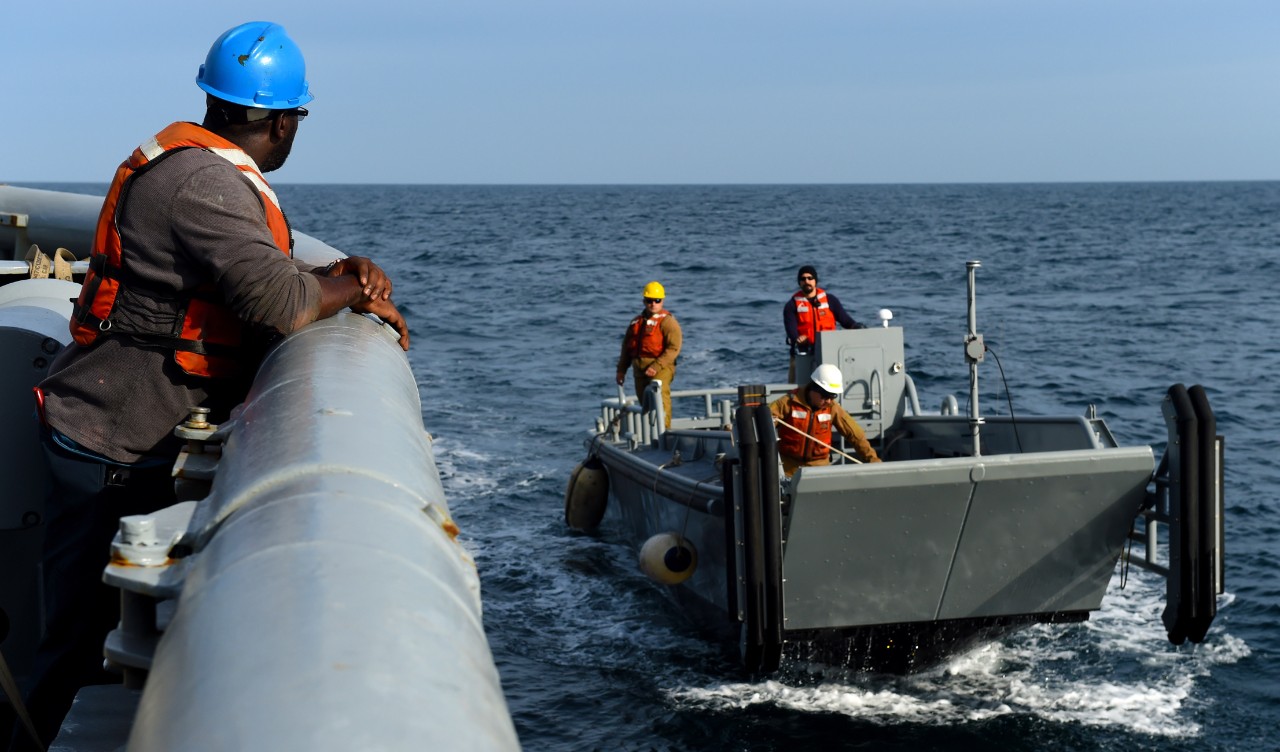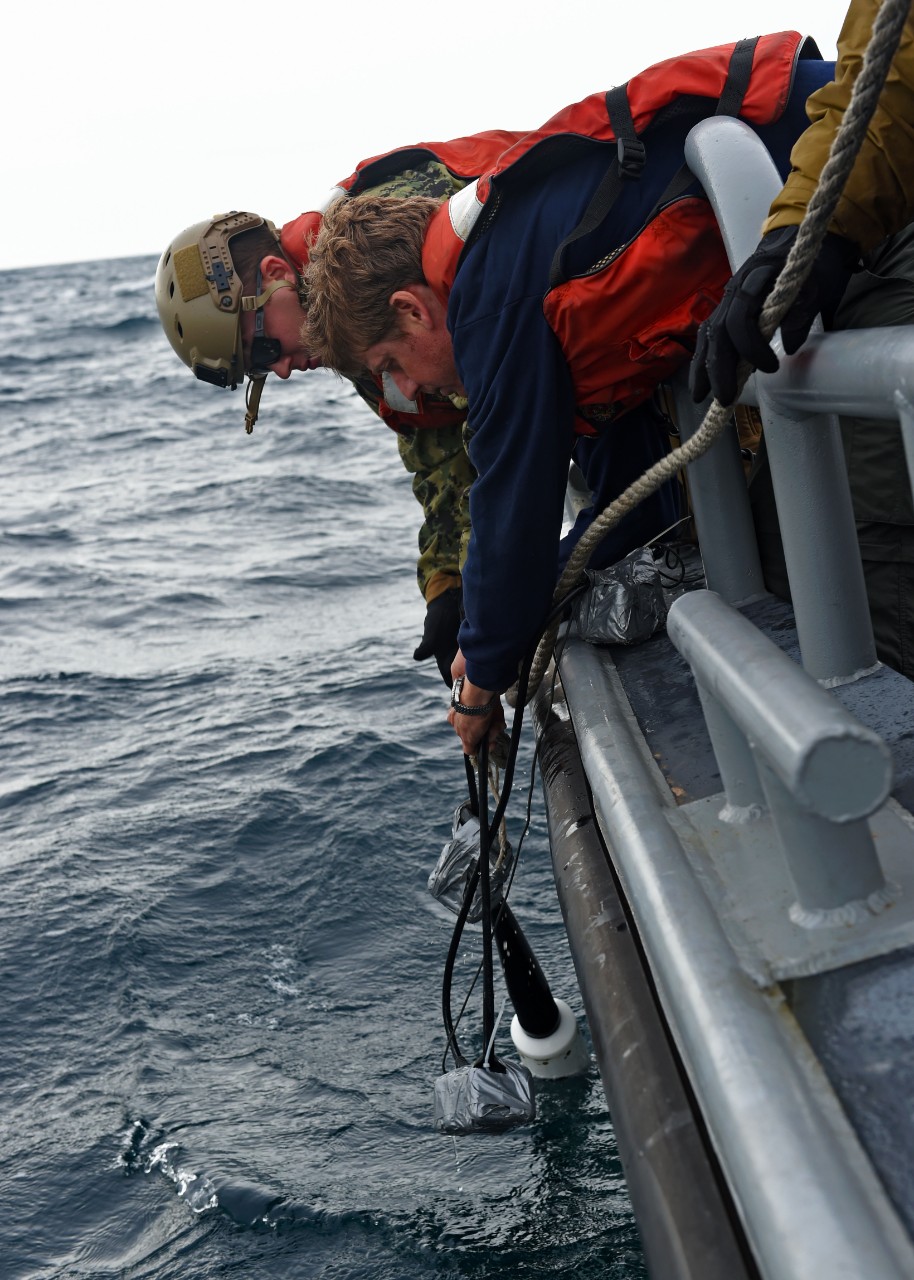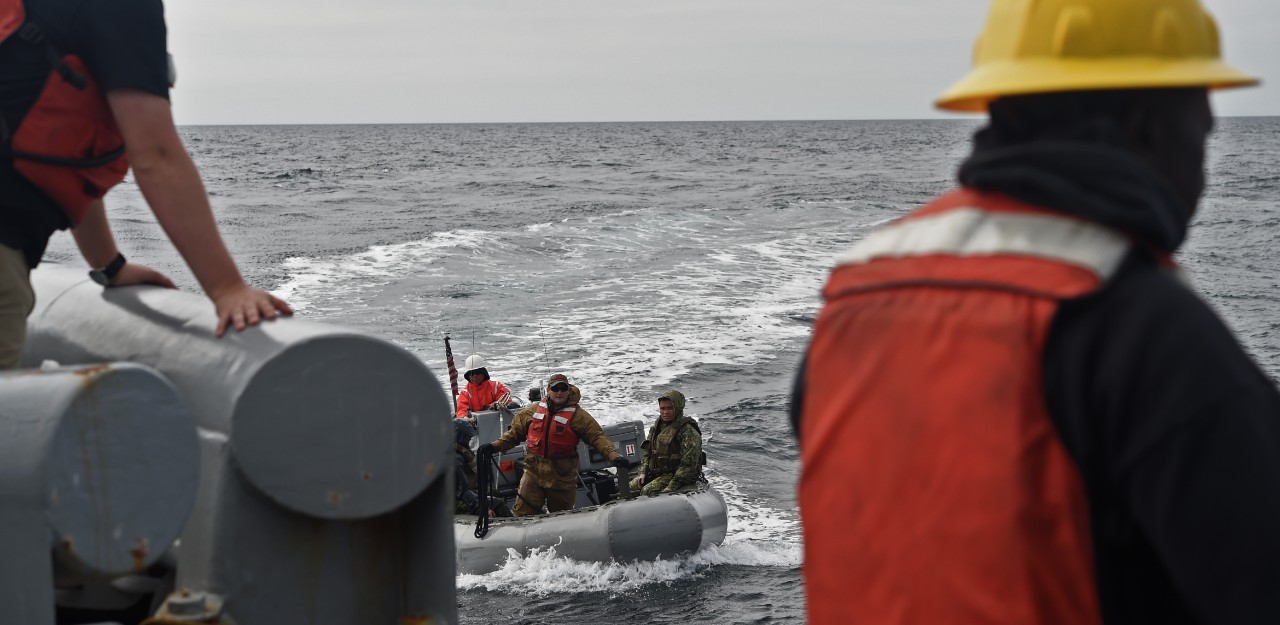
By Mass Communication Specialist 1st Class Eric Lockwood,Naval History and Heritage Command Communication and Outreach Division
Underwater archaeologists from the Naval History and Heritage Command (NHHC), Navy divers from Mobile Diving and Salvage Unit Two (MDSU 2), Sailors from Naval Oceanography Mine Warfare Center (NOMWC), Sailors from the French Mine Clearance Dive Unit (MCDU) and members from Global Foundation for Ocean Exploration (GFOE) embarked upon Military Sealift Command rescue and salvage ship USNS Grasp (T-ARS 51) to survey a late 18th or early 19th century- shipwreck off the coast of England in the North Sea.
The site is interesting to researchers for many reasons, not least of which is its location in the same general area as that of the final battle of John Paul Jones' famous warship Bonhomme Richard. While some evidence from the site suggests the wreck could be contemporaneous to Jones's ship, other information suggests it sank much later.

"The site has potential to be from the late 18th to early 19th century," said George Schwarz, Ph.D., an underwater archaeologist from NHHC. "Although the site has some intriguing features, including buried wooden hull, well-preserved organic artifacts and large concentrations of concreted iron objects, we also have later material on site such as sections of 19th century iron chain."
NHHC, NOMWC and MCDU all surveyed different areas around the shipwreck site using various pieces of equipment. NHHC used a magnetometer towed behind a rigid hull inflatable boat (RHIB) to map possible concentrations of iron along a predetermined grid over the site. NOMWC used unmanned underwater vehicles to survey other areas of the site, and MCDU used a towed side scan sonar. MDSU 2 accompanied the mission and provided logistical and small boat support.
"The teams worked well together to collect seafloor and sub-seafloor features in and around the wreck," said Schwarz. "These new data sets will aid considerably in the interpretation of the site, and we're looking forward to future collaboration with project partners."
Both NHHC and NOMWC often had to trade off using the RHIB, but MCDU had their own and surveyed the site whenever weather and sea conditions allowed. The many hours they spent out on the water allowed them time to reflect on their mission and their part in it.
Acknowledging Bonhomme Richard was given to Jones and the U.S. Navy by France, one of the participating French scuba divers explained he’s glad to be a part of the survey mission and that he is happy to be a part of it.
The identity of the shipwreck under investigation is currently unknown, but future surveys of the site may be planned pending interpretation results of data gathered during this mission. In addition to the wreck site surveyed, the teams conducted remote-sensing operations over an additional two square nautical miles, expanding the previously surveyed areas.
During the Revolutionary War, the French crown loaned Bonhomme Richard to the United States. Commanded by John Paul Jones, Bonhomme Richard's crew was an early example of Sailor toughness. The ship and her squadron were ordered to the United Kingdom to cruise for prizes off the coasts of Ireland, Scotland and England. About a month into her mission on Sept. 23, 1779, she encountered a convoy of merchant ships underway from Flamborough Head, which immediately turned back once they caught sight of Jones and his ships. Jones pursued and around 6:30 p.m. engaged HMS Serapis, which had been covering the retreat. Three and a half hours later, Bonhomme Richard emerged victorious-but mortally wounded. Jones shifted his colors to Serapis, the wounded were transferred over and her riggings were repaired. Bonhomme Richard sank somewhere in the North Sea. Her logs were not updated in her final hours, and so her final location remains unknown.
NHHC, located at the Washington Navy Yard, is responsible for the preservation, analysis, and dissemination of U.S. naval history and heritage. It provides the knowledge foundation for the Navy by maintaining historically relevant resources and products that reflect the Navy's unique and enduring contributions through our nation's history, and supports the fleet by assisting with and delivering professional research, analysis, and interpretive services. NHHC is composed of many activities including the Navy Department Library, the Navy Operational Archives, the Navy art and artifact collections, underwater archeology, Navy histories, ten museums, USS Constitution repair facility and the historic ship Nautilus.



